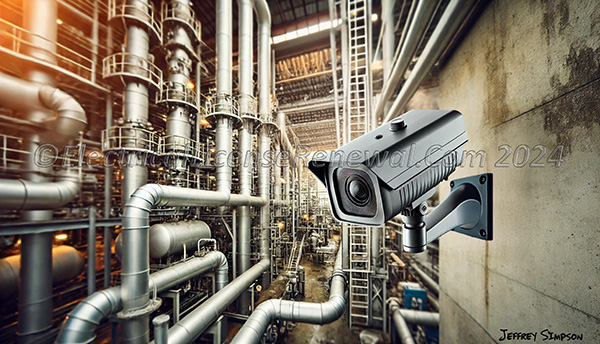AI and Analytics in Alarm Systems.

Artificial intelligence (AI) and analytics are transforming the capabilities of fire and security alarm systems, enhancing their accuracy and reliability. AI algorithms can analyze vast amounts of data from sensors, cameras, and other devices to identify patterns and make intelligent decisions. This enables alarm systems to distinguish between real threats and false alarms more effectively.
Video image smoke detection and video image flame detection (addressed in NFPA 72 Sections 17.7 and 17.8) are examples of how AI can be used to analyze and identify potential smoke or fire.
A Video Image Smoke and Fire Detection (VISD) system utilizes one or more digital video cameras, a signal router or interface, and a computer running video analytic software to analyze each video frame in real time. This system is capable of recognizing both smoke and fire within the video images and can effectively monitor large areas for visible signs of fire.
One application of AI in alarm systems is predictive analytics. By analyzing historical data and identifying patterns, AI can predict potential issues before they occur. For example, AI can detect gradual changes in sensor performance that may indicate an impending failure, allowing for proactive maintenance and reducing the risk of false alarms.
Machine learning, a subset of AI, allows alarm systems to learn from experience and improve over time. For instance, a machine learning algorithm can analyze false alarm events and adjust the system's sensitivity or response criteria to reduce future false alarms. This continuous learning process enhances the system's ability to accurately detect real threats.
AI-powered video analytics is another significant advancement. By analyzing video feeds in real-time, AI can detect suspicious activities, identify objects, and recognize patterns that may indicate a security breach. This enhances the effectiveness of video verification systems by providing more accurate and timely information to monitoring personnel.
Integrating AI and analytics into alarm systems involves the use of advanced software and hardware components. Sensors and cameras equipped with AI capabilities can process data locally or transmit it to cloud-based platforms for analysis. This requires robust communication networks and adequate processing power to handle the data efficiently.
Regular updates and training are essential to ensure the effectiveness of AI and analytics in alarm systems. This includes updating algorithms to reflect the latest threats and trends, and training personnel on how to interpret and act on the insights provided by AI.
By leveraging AI and analytics, alarm systems can achieve higher accuracy, reduce false alarms, and provide more reliable protection. This represents a significant advancement in the field of fire and security alarms, enhancing the safety and security of buildings and occupants.